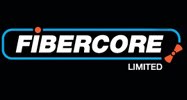Those that attended the FOHEC Conference last week will be aware of the buzz that was created around the use of specialty optical fibers in aeronautics, space and other harsh environments. As well as meeting old colleagues, it was a welcome opportunity to meet other people in the industry to discuss the future of optical fibers.
Much talk was made of the transition from traditional copper cables to the new exciting world of optical fibers, modernising the communication methods on board aeroplanes to accommodate the increased demand for video and data capabilities expected by the average traveller. However, communications does not just cover the fiber that conveys the data to the user, but uses many different components throughout the systems, and the increased use of satellites in space present some particularly challenging questions. Fibercore addressed these problems over ten years ago by developing radiation tolerant versions of their bend-insensitive HiBi polarization maintaining fiber for use in the gyroscopes required by space applications and Dr Andy Gillooly discussed these fibers and the findings of our research during the first of our three presentations at the Symposium. The white paper has since been published on the Fibercore website. The effects of radiation on erbium doped fibers is also a major consideration for communication satellites and Fibercore is looking into the problems that this causes to understand ways of addressing this in the future.
For those that are used to dealing with sturdy copper cables, it is difficult to see the glass fibers as being anything other than fragile and difficult to handle. However, in reality these fibers are more flexible than the old cables and incredibly strong, particularly when the reduced-clad 80µm and even 50µm diameter fibers are chosen. Dr Chris Emslie was able to demonstrate and discuss this in our second presentation of the show, illustrating the physical characteristics by twisting and pulling the fiber samples that he brought with him whilst explaining the lifetime expectations during his presentation. A copy of his white paper is also available if you would like to read more.
Communications was not the only topic of discussion. With the recognition of the benefits of optical fibers, comes more demand for their use in different marketplaces and applications. Telecommunications fibers are great for the transmission of data but are limited in their use outside of this area, and this is where the specialty fibers of Fibercore come into their own. By offering greater photosensitivity and significantly lower bend-induced loss, the results they offer for sensor applications is far superior to standard 125µm telecom fibers, and above even the new range of enhanced telecom fibers, and José Alvarez explained why this is so in the third and final Fibercore presentation of the event. His white paper compares the bend-insensitivity and life-time expectation of our specialty optical fibers against both the SMF28 type and new enhanced fibers for telecommunications, incorporating information on the various coating options that are available for different operating environments.
So the journey for specialty optical fibers goes on, and new challenges continue to present themselves. Fibercore has been at the cutting edge of development for over thirty years and our team looks forward to the next chapter with some excitement, ready to use their expertise and knowledge to address the questions and provide new solutions.
For more information visit our website at www.fibercore.com or contact our sales team at sales@fibercore.com.


